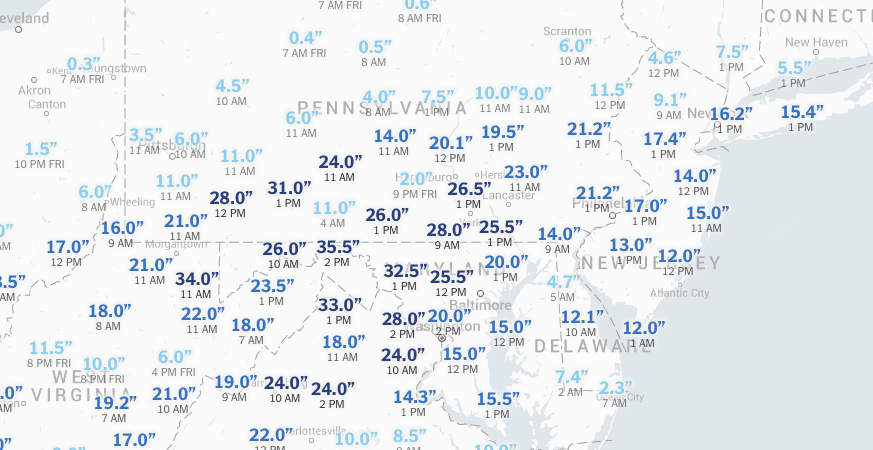Snowzilla is Crippling the East Coast Right Now
23 Jan, 2016
A winter storm on Saturday whipped up record-setting tides higher than during Superstorm Sandy, causing major flooding in New Jersey and Delaware after dumping nearly two feet (60 cm) of snow on the suburbs of Washington, D.C.
The heaviest snow engulfed New York on Saturday and was not expected to stop until Sunday, when up to 30 inches may have piled up in the nation’s largest city, said New York Mayor Bill de Blasio.
The mayor said the storm had strengthened beyond earlier expectations in terms of accumulations and intensity.
New York City buses operated by the Metropolitan Transportation Authority were due to be suspended at noon as the storm bore down on the city.
New Jersey Transit, earlier on Saturday, suspended all bus, rail and light rail service. Earlier the Washington Metropolitan Area Transit Authority, which includes the country’s second-busiest subway system, took the rare step of suspending operations through Sunday.
Nearly 4,300 U.S. flights were canceled, including virtually all travel into New York City airports, according to the FlightAware.com tracking website and transportation officials.
New York Governor Andrew Cuomo declared a state of emergency on Saturday, the 11th state to do so in order to get a handle on highways made impassable by the drifting snow and to shore up coastal areas where the blizzard conditions raised the danger of flooding.
White-out conditions prompted officials to urge residents to stay inside and allow snow plows to clear roads.
“Our message, and we need the public to listen, is to stay home and to stay off the streets. That includes people who are attempting to drive, but it also includes people who are walking,” said Washington Mayor Muriel Bowser.
High winds battered the region, reaching 70 miles per hour in Wallops Island, Virginia, late on Friday, and whipping up the tides, said meteorologist Greg Gallina of the National Weather Service.
Tides higher than those caused by Superstorm Sandy caused major flooding along the Jersey Shore and Delaware coast and set records in Cape May, New Jersey, and Lewes, Delaware, said NWS meteorologist Patrick O’Hara.
A high tide of 8.98 feet was recorded at 7:51 a.m. Saturday at Cape May – slightly higher than the record of 8.9 feet previously set by Sandy on Oct. 29, 2012. A high tide of 9.27 feet was recorded at Lewes, higher than the 9.2 high tide recorded in March 1962.
Reuters
Image National Weather Service
Mentioned In This Post:
About the author
Related Posts
-

If Only We All Had Rich Daddies
-

"Don't Be Afraid of COVID!" He Says
-

Trumps In The Hospital and His Cronies Are Infected
-

Trump Tests Positive for the 'China Virus'
-

What A Shit Show!
-

Is Anyone Really Surprised??
-

Don't Believe Your Ears, Believe Me.
-

Can Trump's Actions Really Shock You Anymore?
-

Poll Numbers No Good? Fire Someone
-

Thank You Mr. President










